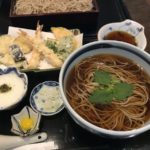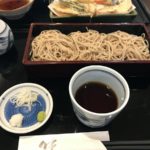大晦日 oomisoka: New Year’s eve
**in Okinawa language it is pronounced “toushinuyuruu” とぅしぬゆるー
New year’s eve in Okinawa is a bit different from the mainland. Overall, there are less temples and shrines in Okinawa than in the mainland (not only, this but historically there are some differences in religion), so visiting at the stroke of midnight is not nearly as common. Some people do it, but it is much less of a thing here than mainland Japan. Mostly only the big ones like Naminoue Shrine in Naha, or Futenma Shrine in Ginowan, are crowded. I have a list of some temples and shrines in Okinawa in a previous post, as well as a description of hatsumode. I described some of the Okinawa New Year’s customs in another post.
As far as countdown fireworks, there are some, mostly at the resort areas. Again, mostly for tourists rather than the common folk, these shows are only about 1 minute; typically the resorts also host live music shows or dance parties as well. Outside of the resorts, Itoman Peaceful illuminations by the Peace Memorial Park and the ChuraSun Beach illuminations in Tomigusuku have fireworks. There are also some fireworks by the Nakagusuku Port/Awase area (by the Comprehensive Park) that I can see from my lanai, and then some to the south in Nanjo at the Yuinchi Wellness resort that I can see as well. The Peace Memorial Park has some solemn ceremony as well, to pray for a peaceful New Year.
Many people stay at home for New Year’s eve. Young people, Americans, and tourists often go out to all-night events, so some areas around Naha, American bases and resorts hold various types of music and party events.
In terms of food, year-end (or year-crossing) soba 年越しそば (toshikoshi soba) takes the form of traditional Okinawa soba rather than mainland style buckwheat soba. Although toshikoshi soba is not that popular here, you will find that the Japanese soba and Okinawa suba places are very busy on New Year’s eve anyway. Rather, typical celebratory foods also used in other Ryukyu feast days are more common. So those feast boxes, usanmi ウサンミ, are the typical; you can buy them at any grocery store during this time, though it is better to pre-order. In addition to usanmi, hors d’oeuvres オードブル trays are commonly purchased (or pre-ordered) from grocery stores and restaurants. But don’t let the name fool you, it is not what many westerners may consider hors d’oeuvres… but rather lots of fried foods and meats. In Hawai’i it is similar to the idea of “heavy pupus.”
Red vs White (Kouhaku uta Gassen 紅白歌合戦) is one of the New Year’s eve TV programs that I am familiar with; there are others, but this is the tradition for my husband and I. Probably because Arashi 嵐 (boy band of my generation) has hosted it a few times, I insist on watching it. This year, Okinawa’s own Namie Amuro 安室奈美恵 will be singing.
Anyway, there are different options on how to spend the eve of the New Year in Okinawa… choose what you like best.
*I will try to add a little more info to this post with some more traditional customs over the next week or so.

